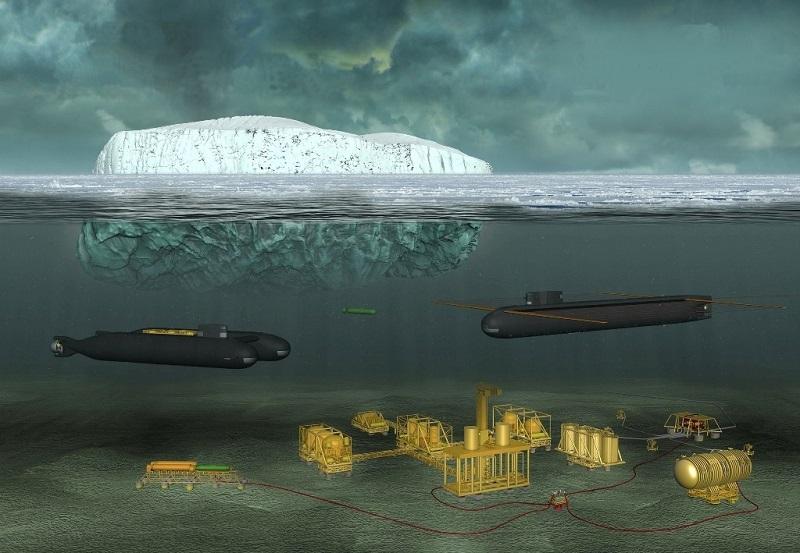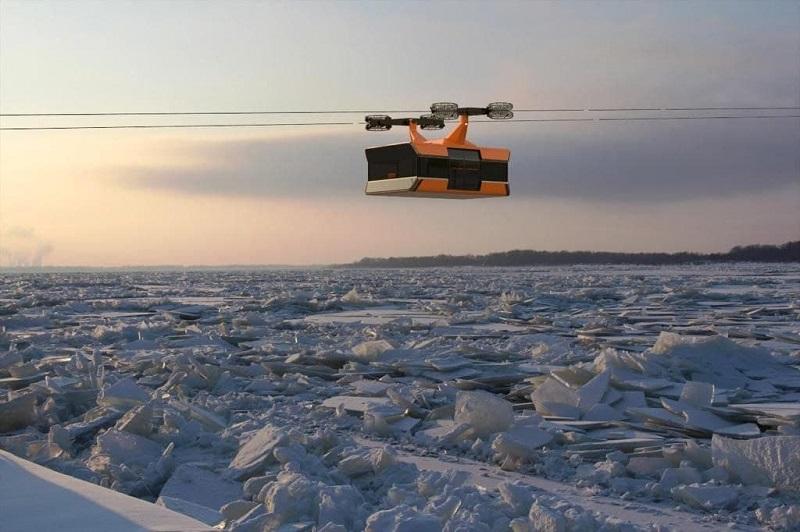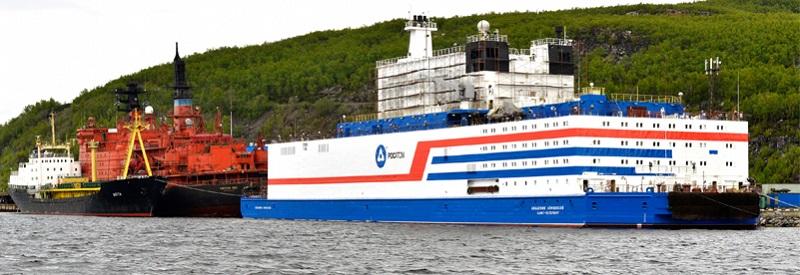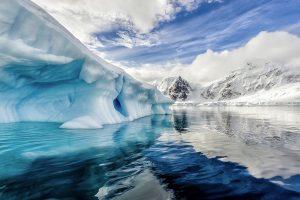
The Iceberg project. Source: https://fpi.gov.ru
Automation in the extractive industry
The Arctic is an uninhabitable region, which at the same time is of great value from the point of view of extraction of natural resources. This is not only oil, but also valuable metals, including those used in high-tech devices. However, the ideas being implemented in the Arctic are not limited to the extraction of fuel and metals. Investment projects from Russia alone affect a wide variety of areas and, according to various estimates, require the attraction of a trillion rubles, of which 400 billion have already been allocated from the federal budget.
Since the Arctic is primarily known for its resources, it is mining and geological exploration companies that focus on technology development. Since the work is carried out in extreme conditions, these organizations try to maximize the degree of automation of their developments.
For example, the highly automated Transocean Enabler drilling rig was created by Statoil. The installation is not only fully automated, but in general leaves almost no traces of human presence. The developers managed to achieve zero emissions of harmful chemicals into the environment.
Entire mining complexes with a small number of people and a high degree of autonomy are also being developed. The Russian Iceberg project, implemented by the Central Design Bureau Rubin and the Foundation for Advanced Research, is gradually developing. They have been working on it since 2015 and according to official data, the design was completed in 2017. In various interviews, the Iceberg was called a full-fledged underwater city with a high degree of automation.
The Iceberg includes an underwater drilling complex, an underwater vessel for seismic exploration, an underwater installation and service complexes. Submarines should be able to provide autonomous existence for about 40 people for 90 days. An underwater energy complex with a service life of 30 years has also been designed, capable of operating completely autonomously, without human intervention or maintenance, for 8000 hours (almost a year).
Autonomous and uninhabited underwater vehicles are being developed by Okeanos in cooperation with St. Petersburg State Maritime Technical University and private corporations. They are able to descend to a depth of up to a kilometer and have been offline for more than six months. The tests were conducted in 2015-2017 and were quite successful.
Another autonomous deep-sea robot called Tan’so 4500 was developed by scientists from China. Initially, it was a robot for more southern latitudes, but it was adapted to Arctic conditions. The robot was used for research and obtaining data on ongoing geological processes.
Due to the high density of ice, the developers also had to come up with a new technology for extracting samples to the surface. Acoustic remote control and automatic guidance means that the robot manages to overcome a variety of obstacles, including fast-moving masses of ice in relatively open areas.
Artificial intelligence

The project of the cabin for the air bridge. Source: https://arctic-russia.ru
Some of the tasks can be almost completely transferred to the system using artificial intelligence. In 2019, Gazprom Neft launched the Kapitan system for digital logistics management. The system monitors online almost all processes for the extraction and transportation of resources in Arctic conditions, calculates tanker routes and chooses the best path. As a result, the cost of exporting a ton of oil decreased by 12%.
IceNet artificial intelligence, the development of which was announced in 2021 by an international group of researchers, is able to predict the movement of ice with high accuracy. The authors of the project claim that the system works thousands of times faster than traditional methods. The accuracy of forecasting for two months ahead is up to 95%.
The difference is that AI does not try to predict the situation based on the laws of physics. The system is trained on the results of ten years of ice cover observations and climate modeling data. As new information is uploaded, IceNet continues to learn and improve.
An ambitious project is the construction of a cable—stayed air bridge over the Anadyr estuary. The Broadcaster company wants to build a 7,600-meter cable car with four cabins with a capacity of up to 35 people. The journey time will take about half an hour, and the ticket price is planned to be about 6 times lower than when crossing by water. According to preliminary estimates, investments in the project were expected to amount to about 2.7 billion rubles. It was also planned that the project would be launched in the winter of 2023-2024, but it is not known how things are going under the sanctions.
Projects to improve living conditions in the Arctic as a whole are mostly under consideration or improvement. For example, the Ministry of Emergency Situations of Russia and the Central Research Institute of the Russian Federation in 2018 developed an intelligent control system for robots and drones for search and rescue operations. It was expected that drones would scout the area, and automated platforms would be engaged in evacuation, simultaneously transporting up to 20 people. The launch was planned in 2021, but apparently the project has not been finalized.
However, unmanned devices are indeed increasingly being developed and used in Arctic conditions. NTI Artificial Intelligence has developed drones for ice exploration, SkyStream has developed a rescue device for scouting the situation and rescuing drowning people, successfully testing it in 2021. Gazprom has already launched unmanned trucks for transportation in 2023.
Ecology

A floating nuclear power plant. Source: https://www.rosenergoatom.ru
Work is actively underway on alternative energy sources, primarily the use of wind and solar. The Tikhaya Bay field base has already been fully provided with energy for the entire season by placing 36 solar panels, leaving fuel generators only as a backup option.
A large-scale project was the construction of the Kola WPP with a capacity of 201 MW by PJSC EL5-Energo. The operation of the plant will lead to a reduction in carbon dioxide emissions by 600,000 tons per year. The project did not stop even after the imposition of sanctions in 2022, even if it was delayed due to a violation of the contract by the contractor Siemens Gamesa. The first stage of the Kola wind farm was launched in December 2022, and the wind farm was launched at full capacity in March 2023. The project can be considered the largest wind farm in the world beyond the Arctic circle.
In 2020, the world’s first floating nuclear power plant was launched. It has been under construction for more than a decade and is part of the floating power unit Akademik Lomonosov. The power of the station will be enough for a city of 100 thousand people. Such stations are criticized for too high construction costs — the power unit alone cost more than 20 billion rubles, and all investments were estimated at almost 170 billion rubles. However, it is assumed that such stations will provide energy to remote regions and provide energy for copper extraction, therefore Rosatom has already begun to develop the second generation of floating nuclear power plants.
Considerable money is being invested in the development of technologies that make it possible to use the resources of the Arctic and increase the possibility of people being there. Together with a number of government initiatives, the conditions allowed for the development of many interesting and ambitious projects. In 2022, the implementation of many of them was frozen due to the deterioration of international relations and opportunities for cooperation.
Nevertheless, large-scale ideas continue to develop. In the spring of 2023, the project of the international scientific station “Snowflake” was approved. This should be the first station capable of operating all year round, even during the polar night. The project is being developed by MIPT and a number of companies and should become a full-fledged scientific city with innovative technologies.
Sokolov P.S.


